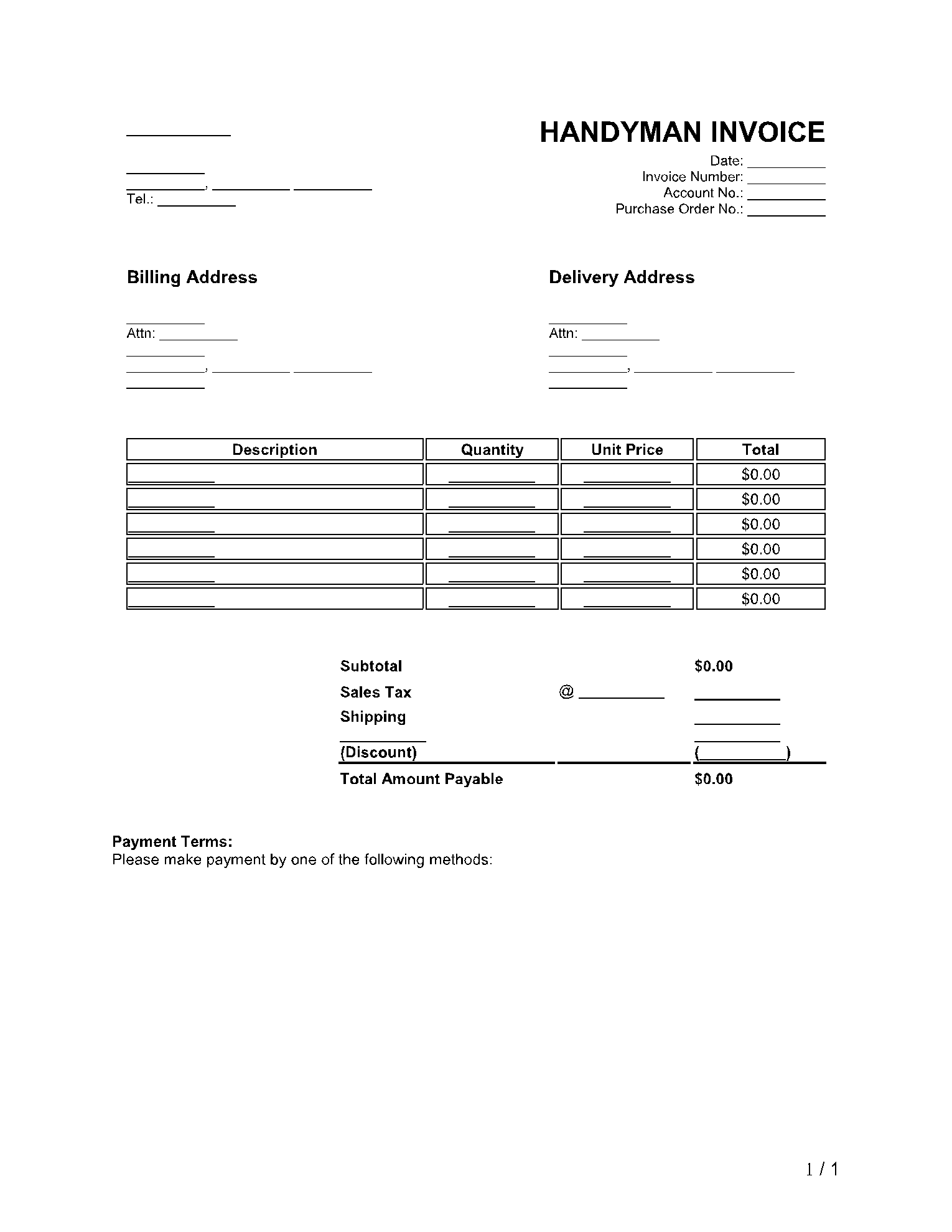The term ‘contractor’ covers a large variety of jobs. A company or a person can hire a contractor to perform all types of jobs, from electrical repairs and roof replacement to painting and plumbing jobs.
Every one of these jobs has its specific services that need to be evaluated and priced so that the client can receive a complete list of the procedures and materials they need to pay for.
A handyman invoice is a document that summarizes the job performed so that the client knows what they are paying for. And the handyman invoice template is the best way to draft that document.
What Is a Handyman Invoice?
The contractor, also known as a handyman, handles all jobs connected to the construction or the renovation of a building.
These are usually complex projects, so the client needs to know precisely each service the contractor is performing, the materials they need, how many hours each job will take, and so on.
The handyman invoice lists all this information, so there shall be less or no misunderstandings and conflicts between the two parties.
When to Use a Handyman Invoice?
The use of the handyman invoice depends on what the contractor and the client agree upon initially. The handyman invoice is usually presented to the client when the job is finished, so they can see every step and every expense included in the project.
Using a handyman invoice template is the easiest way to explain to the client what the total cost of the project stands for. In some cases, the two parties may agree to set some billing periods, if it’s a larger project that takes longer to complete.
The contractor issues an invoice for every billing period; it shows the progress and the current cost.
What Are the Essential Elements in a Handyman Invoice?
Whether you use a general invoice template pdf or a specific handyman invoice template, there are some elements you need to make sure are present:
- The number of the invoice; you need to assign a unique number to every invoice so you can easily keep track of every service and every transaction.
- The company name – the business name of the contractor, and all the identifying information.
- The identifying information of the client – name, address, phone number.
- The date of the invoice.
- A detailed description of the goods and services offered; every item must be mentioned, including quantity and price.
- The total amount owed after all discounts have been applied.
- VAT details – every handyman receipt must include the VAT rate and the total VAT charged.
- The terms of payment – mention all the details the client will need to make the payment.
- Shipping details, if it’s the case.
Conclusion
The contractual relationship between a contractor and the client can quickly become tense, which is why it’s essential to set all the terms in advance and follow them all through the transaction.
The handyman invoice is the document the service provider offers at the end to prove that every task they agreed upon was completed. Many important details must be included in this document, so it’s better to create it using a handyman invoice template.
You can use the handyman invoice from CocoSign, and also take a look at all the other templates we offer, which might be what you need for your business.
